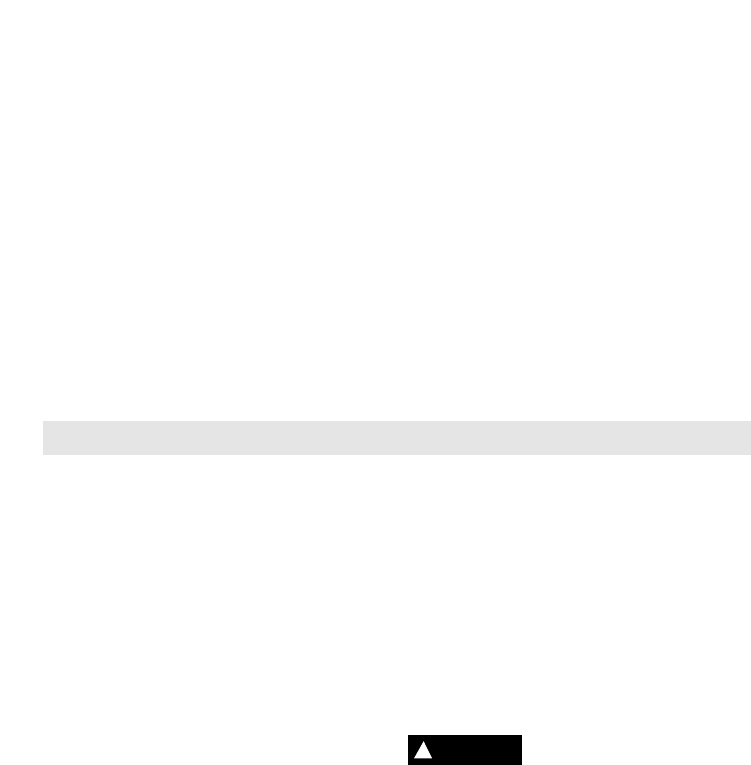
-3-
Safety Rules for Cordless Reciprocating Saws
Maintain tools with care. Keep cutting
tools sharp and clean.
Properly maintained
tools with sharp cutting edge are less likely to
bind and are easier to control.
Check for misalignment or binding of
moving parts, breakage of parts, and any
other condition that may affect the tool's
operation. If damaged, have the tool
serviced before using.
Many accidents are
caused by poorly maintained tools.
Use only accessories that are
recommended by the manufacturer for
your model.
Accessories that may be
suitable for one tool may create a risk of
injury when used on another tool.
Service
Tool service must be performed only by
qualified repair personnel.
Service or
maintenance performed by unqualified
personnel may result in a risk of injury.
When servicing a tool, use only identical
replacement parts. Follow instructions in
the Maintenance section of this manual.
Use of unauthorized parts or failure to follow
Maintenance Instructions may create a risk of
shock or injury.
Hold tool by insulated gripping surfaces
when performing an operation where the
cutting tools may contact hidden wiring.
Contact with a “live” wire will make exposed
metal parts of the tool “live” and shock the
operator.
Do not drill, fasten or break into
existing walls or other blind areas where
electrical wiring may exist. If this situation is
unavoidable, disconnect all fuses or circuit
breakers feeding this worksite.
Keep hands away from cutting area. Do
not reach under the material being cut.
The proximity of the blade to your hand is
hidden from your sight.
Keep hands from between the gear
housing and saw blade clamp (plunger).
The reciprocating blade clamp (blade
plunger) can pinch your fingers.
Do not use dull or damaged blades. Bent
blades can break easily or cause kickback.
Before starting to cut, turn tool "ON" and
allow the blade to come to full speed. Tool
can chatter or vibrate if blade speed is too
slow at beginning of cut and possibly
kickback.
Always wear safety goggles or eye
protection when using this tool. Use a
dust mask or respirator for applications,
which generate dust.
Secure material before cutting. Never
hold it in your hand or across legs.
Small
or thin material may flex or vibrate with the
blade, causing loss of control.
Make certain all adjusting screws (knobs)
and the blade clamp are tight before
making a cut.
Loose adjusting screws and
clamps can cause the tool or blade to slip and
loss of control may result.
When removing the blade from the tool
avoid contact with skin and use proper
protective gloves when grasping the blade
or accessory.
Accessories may be hot after
prolonged use.
Some dust created by
power sanding, sawing,
grinding, drilling, and other construction
activities contains chemicals known to
cause cancer, birth defects or other
reproductive harm. Some examples of
these chemicals are:
• Lead from lead-based paints,
• Crystalline silica from bricks and cement
and other masonry products, and
• Arsenic and chromium from chemically-
treated lumber.
Your risk from these exposures varies,
depending on how often you do this type of
work. To reduce your exposure to these
chemicals: work in a well ventilated area, and
work with approved safety equipment, such
as those dust masks that are specially
designed to filter out microscopic particles.
!
WARNING


















